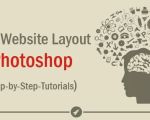
Crafting the Perfect Educational Website: A Guide to Design Solutions
As someone deeply involved in the world of web design, I've often been asked how educational websites can be optimized for better user engagement and functionality. Having worked on numerous educational projects, I understand that it's not just about making a website look good—it's about creating a digital environment that enhances learning experiences. If you're involved in developing or redesigning an educational platform, this article will guide you through the critical aspects of designing a website that meets the needs of students, educators, and institutions alike.
1. Understanding the Needs of the Target Audience
Before diving into the technicalities of web design, it's essential to understand the specific requirements of the audience. Educational websites cater to a diverse group: students, parents, teachers, administrators, and sometimes, even alumni. Each group has different needs and expectations when navigating a site. For instance, students might be looking for interactive learning tools, while teachers may need easy access to resources, lesson plans, and student performance tracking. Parents often search for news, updates, and communication channels with teachers or school administrators.
By conducting user research, you can gather insights into what each group needs from the site. Surveys, focus groups, and user testing are effective ways to ensure that the website is designed with the end-user in mind. A deep understanding of these different needs will lay the groundwork for a well-rounded, functional website.
2. Prioritizing User-Friendly Design
Educational websites must be intuitive and easy to navigate. The user experience (UX) should be at the forefront of your design process. Think of it this way: if a student, teacher, or parent struggles to find key information on your website, the chances of them returning to it are slim.
Here are a few principles to follow for a user-friendly design:
- Clear Navigation: A simple, organized navigation bar is essential. Categories should be clearly defined, and pages should load quickly.
- Accessible Content: Educational websites often feature a variety of content, from video lectures to articles and quizzes. Ensure that all content is easy to access and clearly labeled. A search function is an invaluable tool here.
- Mobile Optimization: Many students and educators will access the site via mobile devices. A responsive design ensures that the website looks and functions well on any screen size.
3. Designing for Accessibility
Accessibility is one of the most critical aspects of web design, especially for educational websites. As you might imagine, students with disabilities or learning challenges rely heavily on accessible websites to engage with educational content.
To ensure your website is accessible, consider the following:
- Alt Text for Images: All images should have descriptive alt text to assist users with screen readers.
- Color Contrast: Make sure there is enough contrast between text and background colors for those with visual impairments.
- Keyboard Navigation: Your website should be navigable using only a keyboard. This is particularly important for users who are unable to use a mouse.
- Text-to-Speech Functionality: Offering audio versions of important texts can significantly help students with dyslexia or visual impairments.
4. Interactive Features that Enhance Learning
One of the key elements that set educational websites apart from other types of websites is the presence of interactive tools. These tools not only engage students but also enhance the learning experience by offering personalized learning pathways, quizzes, assessments, and even virtual classrooms.
Consider integrating the following features into your design:
- Interactive Quizzes and Assessments: Incorporating quizzes that provide instant feedback can help students understand their progress and areas of improvement.
- Video Lectures and Live Sessions: Streaming video content that students can access at their own convenience is increasingly popular. Live sessions for real-time interaction are another excellent feature.
- Forums or Discussion Boards: Allow students to engage with each other and instructors in a collaborative environment. This can foster a sense of community.
5. Real-World Examples of Successful Educational Website Designs
Let’s look at some educational websites that have excelled in design and functionality. These real-world examples can help you visualize how to implement some of the design solutions we’ve discussed:
Example 1: Khan Academy
Khan Academy is one of the most well-known educational platforms globally. It offers free courses, lessons, and practice exercises in a variety of subjects. Their website is easy to navigate, visually appealing, and offers interactive exercises that enhance the learning experience. The content is broken down into bite-sized lessons that are perfect for students of all ages.
Example 2: Coursera
Coursera partners with top universities and organizations to offer online courses. Its website is visually attractive, easy to navigate, and offers a personalized dashboard that tracks a student’s progress. The interactive features, such as quizzes, peer assessments, and forums, make the learning experience much more engaging.
Example 3: Edmodo
Edmodo is a popular educational platform that connects students and teachers in a safe online environment. Its design focuses on simplicity, with a clean interface that makes it easy for teachers to assign homework, manage grades, and communicate with students. Students can also collaborate with each other through discussion boards.
6. Implementing SEO Strategies for Educational Websites
When designing an educational website, it's not enough to just focus on the design. SEO (Search Engine Optimization) is essential for ensuring your site ranks well on search engines like Google. High-ranking websites are more likely to be discovered by your target audience. Here are some SEO tips to boost your educational website:
- Keyword Optimization: Use relevant keywords throughout the content, but avoid keyword stuffing. Integrate terms like "online learning," "educational tools," and "distance learning" naturally into your content.
- Mobile-Friendly Design: Google places a heavy emphasis on mobile-friendliness in its rankings. Ensure your website is responsive and mobile-optimized.
- High-Quality Content: Google rewards websites that offer valuable content. Regularly update your blog or resources section with informative articles or educational tools.
By focusing on both design and SEO, you can significantly improve the visibility and usability of your educational website, making it a resource that students and educators will return to again and again.








